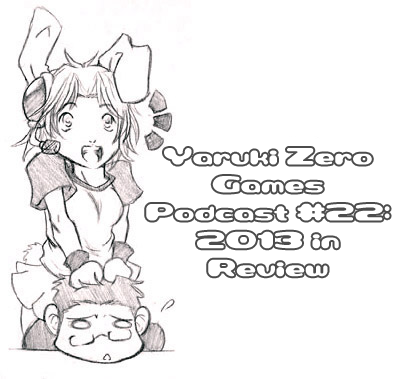 It still needs a little more work, but I finished the first draft of Kagegami High and did some playtesting. Along the way I’ve wound up thinking a lot about the thematic and artistic underpinnings of it. I didn’t set out to create Kagegami High with a specific set of themes in mind, but I think I’ve figured out what themes I want it to have over the course of writing it.
It still needs a little more work, but I finished the first draft of Kagegami High and did some playtesting. Along the way I’ve wound up thinking a lot about the thematic and artistic underpinnings of it. I didn’t set out to create Kagegami High with a specific set of themes in mind, but I think I’ve figured out what themes I want it to have over the course of writing it.
The world at large is weird about Japanese schoolgirls. Japanese schoolgirls are, you know, human beings (of a particular age, gender, and nationality) with their own individual thoughts and agency, and they have perhaps unusually fertile and creative subcultures. (Though there are others that are less celebrated, like the wonderfully gonzo fashion subcultures of Africa.) Japanese schoolgirls are a pretty major market demographic in Japan too, and a lot of companies are trying to reach them as trendsetters and consumers. On the other hand they’re the subject of a mystique and a worrisome bundle of fetishes, and they get used as a motif as well. There’s a lot of anime and related media that deals with schoolgirls in various ways, and while there are women who create anime and manga about schoolgirls and draw on their own experiences (Naoko Takeuchi and Aoki Ume come to mind), a lot of it is by and for men. Fine art that touches on Japanese schoolgirl subject matter is often like surrealism’s treatment of women in that it’s often more about the idea of women from a male perspective.
 Although I’m necessarily coming at this from the perspective of a white guy, I think an important (if somewhat subtle) part of Kagegami High is looking at the dissonance between Japanese high school girls as human beings and Japanese high school girls as an artistic concept and motif. The cartoonish surveillance state of the school isn’t just a reflection of the intrusive surveillance of society, but a metaphor for the eyes directed at Japanese schoolgirls, in both reality and fantasies. Or as one entry in the school announcements table puts it:
Although I’m necessarily coming at this from the perspective of a white guy, I think an important (if somewhat subtle) part of Kagegami High is looking at the dissonance between Japanese high school girls as human beings and Japanese high school girls as an artistic concept and motif. The cartoonish surveillance state of the school isn’t just a reflection of the intrusive surveillance of society, but a metaphor for the eyes directed at Japanese schoolgirls, in both reality and fantasies. Or as one entry in the school announcements table puts it:
You are being watched, curiously, intently, lazily, lustily. You can feel the eyes on you, the alien eyes from another reality, the eyes that belong to those for whom your existence is an ideal beyond reach, but never out of mind. There’s something disgusting about them, something disturbing.
I think a lot of the game’s content is about living in a world with massive forces that make the individual feel small. That’s something we all experience, but as a group that’s fetishized and commodified and so on, Japanese schoolgirls seem like an ideal lens to explore those themes. Conspiracy theorists deal with that feeling by adopting the belief that they’re unusually capable people who’ve managed to see through to the truths that evade the great mass of sheeple. Kagegami High students deal with these things in a variety of different ways, but especially by way of joining clubs like the Illuminati Club, Conspiracy Club, Genetically Modified Organisms Club, or the Kagegami High Troubleshooting Protagonists Club. There’s also the part about how the game makes players engage this fictional world through a female character, albeit a pretty weird one more often than not.

Kagegami High is also decidedly surreal. A lot of that is a result of simply going where the inspiration of Maid RPG, Sayounara Zetsubou-sensei, and Welcome to Night Vale took me, but I have been consciously exploring surreal art, both in terms of the specific art movement of the 1920s and in general. Surrealism makes statements about the human experience through absurd, impossible, yet realistically-rendered imagery that carries a certain dreamlike quality. As in the game’s source material, Kagegami High’s ridiculous microcosm of society reflects reality through a funhouse mirror to highlight just how strange the world we live in really is. Some of the content of Kagegami High is inevitably going to be random for the sake of randomness (and thus maybe a bit Dadaist), but a lot of it makes statements about the world in various ways. Students have to navigate all kinds of nonsensical rules, are expected to treat the rich girls among them as though they were inherently better even if they’re in the middle of proving otherwise, and have civics classes where they learn all about bribery and intimidation.
I also tried to give it a core of kindness and compassion. The students of Kagegami High are in a strange, paranoid world, but they form friendships and find a kind of belonging. Much like in Night Vale, there are those parts when that one melancholy Disparition song plays, and everyone reflects on what they’ve made it through together. Along with the power-hungry maniacs, your Kagegami High classmates include the cloyingly sincere, good-natured friends who, despite being weirdos themselves, try to help you all make it through things together.
Anyway. Kagegami High clocks in at 168 pages, 63,000 words, and over 200 graphical elements, and it’s going to be my most ambitious original game thing so far. I’m not even sure what it is that I’ve made, but I hope you all enjoy it.



 So yeah. Between icons and silhouettes and a few other things, the book will probably have a few hundred visual elements (in addition to some shenanigans with fonts and Unicode characters and such). It’s something that fits this particular game really well and wouldn’t work most of the time, but I’ve been very pleased with the results, and not just because it’s inexpensive.
So yeah. Between icons and silhouettes and a few other things, the book will probably have a few hundred visual elements (in addition to some shenanigans with fonts and Unicode characters and such). It’s something that fits this particular game really well and wouldn’t work most of the time, but I’ve been very pleased with the results, and not just because it’s inexpensive.


 Beginning in 2014, Star Line Publishing will be taking over handling
Beginning in 2014, Star Line Publishing will be taking over handling 

